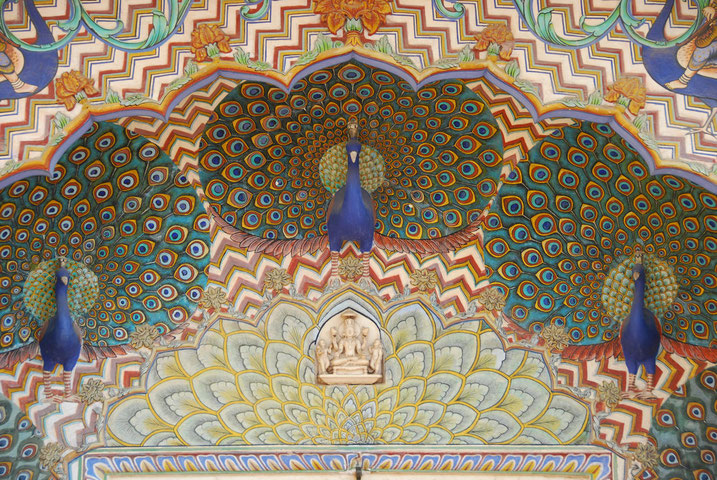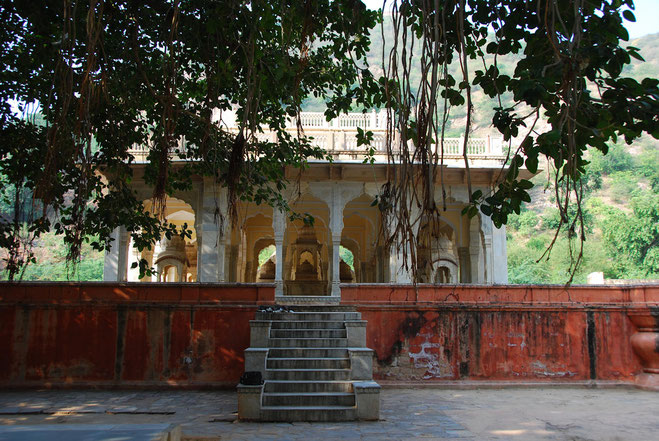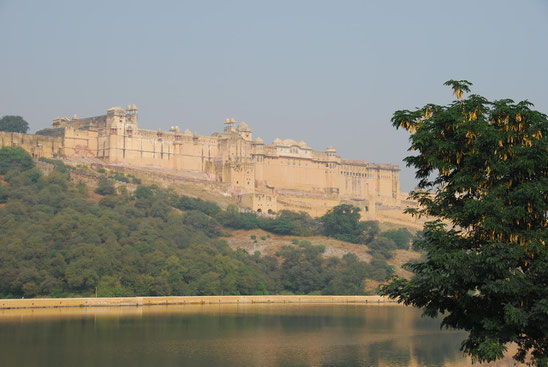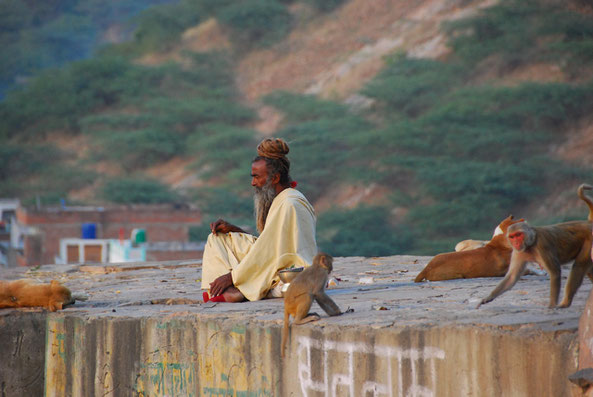India 2014 - Jaipur
Jal Mahal (Water Palace)
Jal Mahal was built by Maharaja Madho Singh in 1799 as a summer residence in the middle of Man Sagar, situated on the way from Jaipur to Amber Fort.
City Palace

The City Palace is the seat of the Maharaja of Jaipur, head of the Kachwaha Rajput clan.
It was built in early 18th century. But construction never really stopped and the palace has been constantly extended resulting in a complex labyrinth of gardens and buildings, the style a mix of Mughal, Rajput and European architecture.
The most striking building is Chandra Mahal, until today residence of the family of the former rulers of Jaipur.
Hawa Mahal (Palace of the Winds)

Hawa Mahal, also called Palace of the Winds, is famous for the 5 storey sandstone front facade with 953 small windows, often described as a honeycomb structure.
As beeing a part of the City Palace it was connected to the zenana, thus giving the women of the royal household the possibilty to observe streetlive without beeing seen, as they had to obey strict purdah.
Many of the windows have stone carved screens set into semi octagonal bays allowing for a good view to the outside. The palace was built in 1799 by Maharaja Sawai Pratap Singh.
Royal Gaitor

Just outside the old city walls of Jaipur this is a most peaceful spot to escape the chaotic streets of Jaipur.
It's the place of the cenotaphs of the Maharajas. The stone monuments are intricately carved with an impressive depth of detail.
Amber Fort

Amber Fort, located north of Jaipur and one of the main attractions in that area, was declared UNESCO World Heritage Site in 2013.
Until the Kachwaha Rajput Clan shifted their seat to Jaipur in 1727 it was the home to the Maharajas of Jaipur.
The first structures date from around 1000 CE. The main complex of the today fort was created in the 16th century, mostly on the ramains of the older structures.
The fort consists of four distinct sections with their own courts and buildings.
The fourth and most inner section comprised the zenana, quarter of the women of the royal household.
The Moata Lake at the base of the fort acted as the main water supply of the fort.
Surya Mandir (Sun Temple)

Surya Mandir is a temple in the west of Jaipur. It can be reached through one of the old city gates named Suraj Pol by a small 3km walk up the hill.
The temple is perched 100m above Jaipur and offers a nice view of the city.
It is also referred to as the monkey temple, as all the way up to the temple and the small temple area itself are crowded by monkeys.
Jantar Mantar

The Jantar Mantar (may be translated into "instrument of calculation") in Jaipur is one of five observatories built by Maharaja Jai Singh. Most instruments in Jaipur date from 1728 - 1734. The other observatories are located in Delhi, Varanasi and Ujjain.
The purpose of the various instruments is to calculate the azimuth, altitude, location of stars eclipses and time. Different coordinate systems are used, and some instruments even may be used for transformation between different systems.













































































